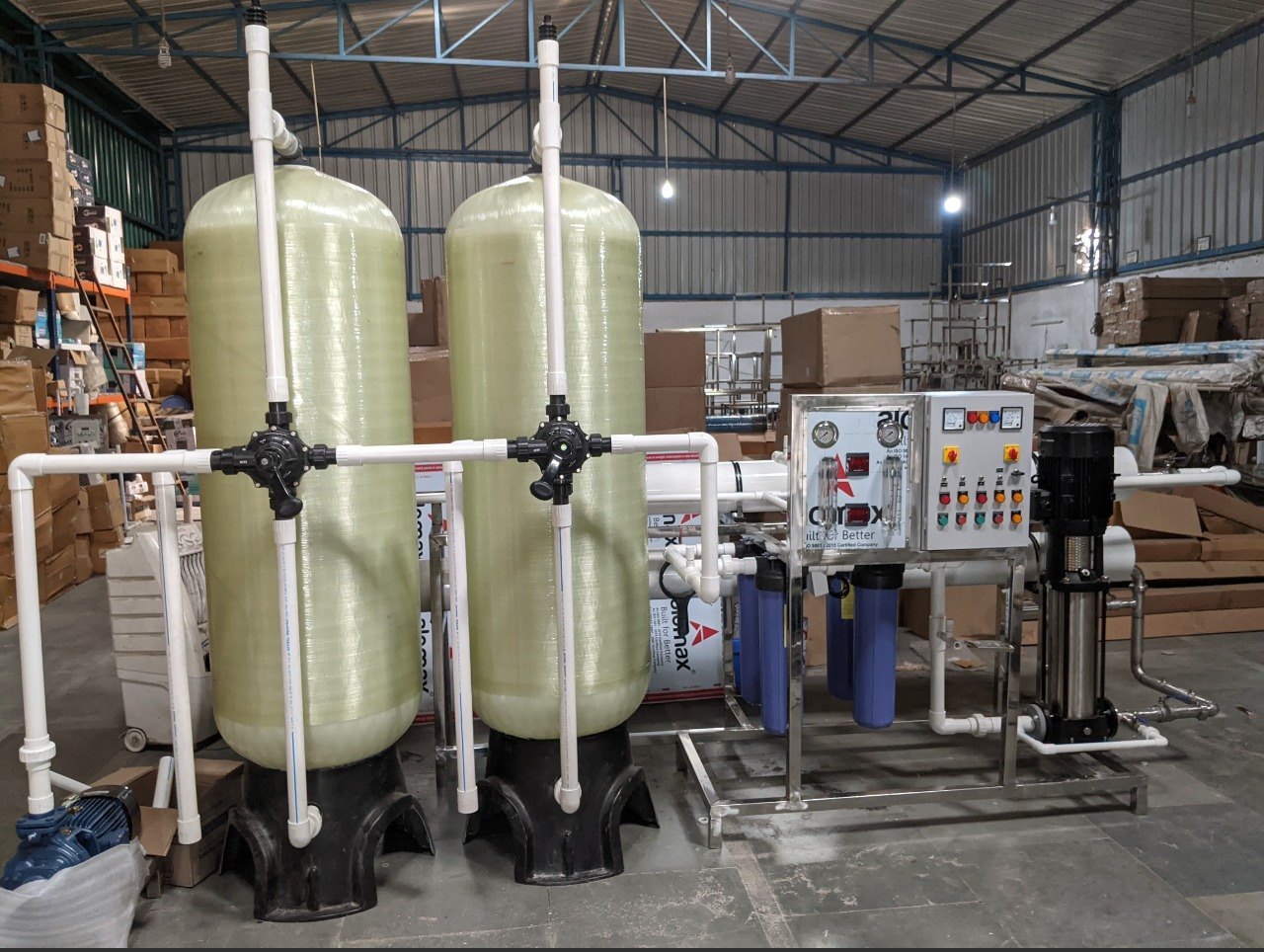Reverse Osmosis Plants Installations Bangalore

Contact : +919945677068
Reverse Osmosis Plants: Revolutionizing Water Purification
In today's world, access to clean, safe drinking water is more critical than ever. With increasing water pollution and environmental concerns, Reverse Osmosis (RO) technology has emerged as a pivotal solution for water purification. This article delves into the workings of RO plants, their benefits, applications, and the factors to consider when choosing an RO system.
What is Reverse Osmosis?
Reverse Osmosis (RO) is a water purification technology that removes contaminants from water by using a semi-permeable membrane. This process involves applying pressure to overcome the natural osmotic pressure of the water, allowing pure water to pass through the membrane while rejecting impurities.
How Does Reverse Osmosis Work?
The RO process begins with water being pre-filtered to remove larger particles and sediments. The pre-filtered water then enters the RO membrane, which operates under high pressure. The semi-permeable membrane allows only water molecules to pass through while blocking contaminants such as dissolved salts, bacteria, viruses, and other impurities. The purified water is collected on the other side of the membrane, while the concentrated waste is flushed away.
Benefits of Reverse Osmosis Plants
-
High-Quality Purification: RO plants are renowned for their ability to remove up to 99% of contaminants, including harmful substances like lead, arsenic, and chlorine. This ensures that the water is not only safe but also tastes better.
-
Versatility: RO technology is versatile and can be used for various applications, including residential, commercial, and industrial purposes. Whether it's for a household, a restaurant, or a manufacturing facility, RO systems can be tailored to meet specific needs.
-
Cost-Effective: While the initial investment in an RO plant can be significant, the long-term benefits include reduced costs associated with purchasing bottled water or frequent filter replacements. RO systems are also energy-efficient, making them a cost-effective choice for water purification.
-
Low Maintenance: RO systems require minimal maintenance. Regular cleaning and occasional membrane replacement are usually sufficient to keep the system running efficiently.
-
Environmentally Friendly: By reducing the need for bottled water, RO systems help minimize plastic waste. Additionally, they use water efficiently, with modern RO plants designed to reduce wastewater generation.
Applications of Reverse Osmosis Plants
-
Residential Use: For households, RO systems provide an affordable and effective solution for purifying drinking water. They can be installed under the sink or as a standalone unit, ensuring access to clean water for cooking, drinking, and other household needs.
-
Commercial Use: Businesses such as restaurants, cafes, and hotels rely on RO plants to ensure the quality of their water supply. High-quality water is crucial for cooking, beverage preparation, and maintaining equipment.
-
Industrial Use: Industries that require high-purity water, such as pharmaceuticals, electronics, and manufacturing, use RO systems to meet stringent quality standards. RO technology is essential for processes that demand exceptionally clean water.
-
Agricultural Use: In agriculture, RO plants are used to provide clean water for irrigation and livestock. This ensures that crops receive water free from contaminants and helps improve agricultural productivity.
Choosing the Right Reverse Osmosis Plant
When selecting an RO plant, several factors should be considered to ensure optimal performance:
-
Water Quality: Assess the quality of your water source to determine the level of filtration required. Test for contaminants such as heavy metals, chemicals, and microbial organisms.
-
Capacity: Choose an RO system based on your daily water consumption needs. RO plants come in various capacities, from small residential units to large industrial systems.
-
Maintenance Requirements: Consider the maintenance needs of the RO system. Look for systems with easy-to-replace filters and membranes, and ensure that you have access to replacement parts.
-
Certifications: Ensure that the RO system has relevant certifications, such as those from the National Sanitation Foundation (NSF) or the Water Quality Association (WQA). These certifications indicate that the system meets industry standards for performance and safety.
-
Cost: Evaluate the cost of the RO plant, including installation, maintenance, and operational expenses. While a higher upfront investment may be required, consider the long-term savings and benefits.
Conclusion
Reverse Osmosis plants are a revolutionary solution for water purification, offering unparalleled benefits in terms of safety, versatility, and cost-effectiveness. Whether for residential, commercial, or industrial applications, RO technology provides high-quality water that meets rigorous standards. By understanding the workings of RO systems and carefully selecting the right plant, you can ensure access to clean, safe water for years to come. Embrace the power of Reverse Osmosis and experience the difference in water quality and purity today.
